14 Late-Blooming Plants That Keep Bees Visiting in Fall
As fall settles in, many gardens begin to quiet down, but there are plants that continue to thrive. These late-blooming plants help keep bees buzzing well into the cooler months. With their vibrant flowers, they offer crucial food sources as other plants fade. If you want to keep your garden buzzing with activity, consider adding these blooms. These plants are perfect for extending the growing season and supporting pollinators.
This post may contain affiliate links, which helps keep this content free. Please read our disclosure for more info.
Aster
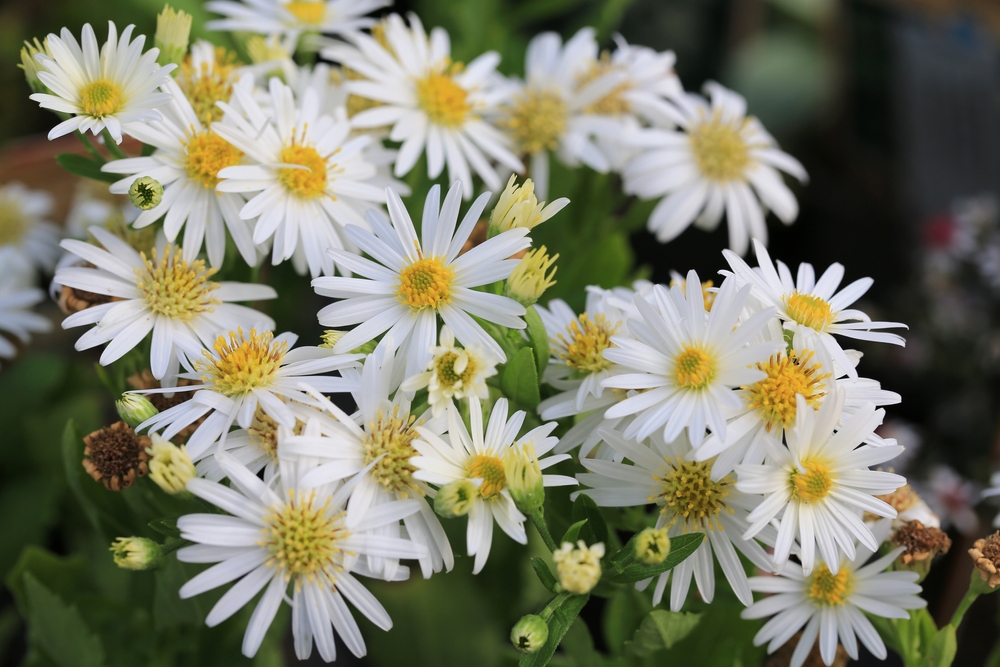
Asters are a classic fall bloom that bees absolutely love. These vibrant flowers come in shades of purple, pink, and white, making them a colorful addition to any garden. Asters bloom late in the season, providing an important nectar source for bees as other flowers begin to fade. Their star-shaped petals and abundant blooms make them a reliable food source for pollinators.
These plants thrive in full sun and well-drained soil, and they are relatively low-maintenance. Asters can reach up to 3 feet tall, making them a perfect choice for filling in gaps in your garden. They are especially beneficial to bees in late September and October, keeping your garden buzzing during the fall months. With their beautiful colors and bee-friendly nature, asters are a must-have for late-season gardens.
Goldenrod

Goldenrod is a plant that produces large clusters of small yellow flowers, perfect for attracting bees. This plant is not only a late bloomer, but it also provides a rich source of nectar and pollen that bees depend on in the fall. Goldenrod can grow up to 4 feet tall and is a great addition to naturalized or wildflower gardens. It flowers in late summer through fall, extending the blooming season when many plants are finishing up.
These plants are hardy and thrive in full sun, preferring well-drained soil. While they may get a bad reputation for causing allergies, goldenrod is an essential late-season nectar provider for pollinators. Bees flock to its blossoms in large numbers, making it a great choice for anyone looking to support local wildlife. Goldenrod is easy to grow and is a great way to keep your garden lively and buzzing in the fall.
Sedum (Autumn Joy)
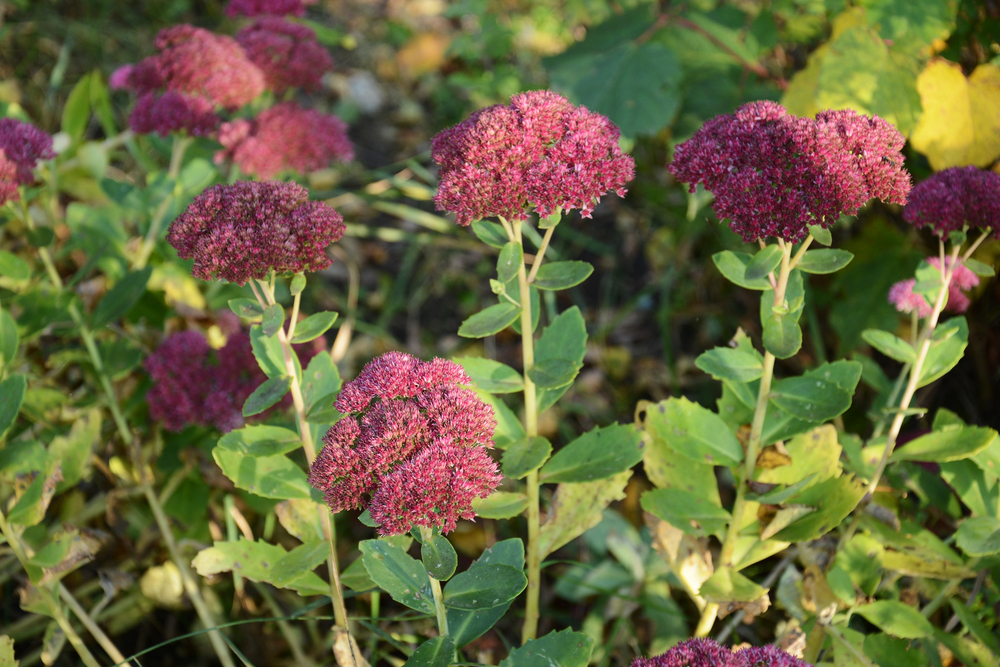
Sedum, particularly the Autumn Joy variety, is a fantastic late-blooming plant for bees. Known for its fleshy, succulent leaves, it produces pink to red flowers that bloom late in the season. Sedum is often visited by bees because of its easy-to-access nectar, especially as other flowers begin to die off. The flowers also turn from a deep pink to a rusty red as they mature, creating visual interest and extending the plant’s bloom period.
This hardy perennial grows well in dry, well-drained soil and thrives in full sun. It is a great choice for a low-maintenance, drought-tolerant garden. Sedum blooms in late summer through fall, providing much-needed nourishment for bees as the cooler weather sets in. Its sturdy structure and late blooming make it a valuable addition to any pollinator-friendly garden.
Purple Coneflower (Echinacea)
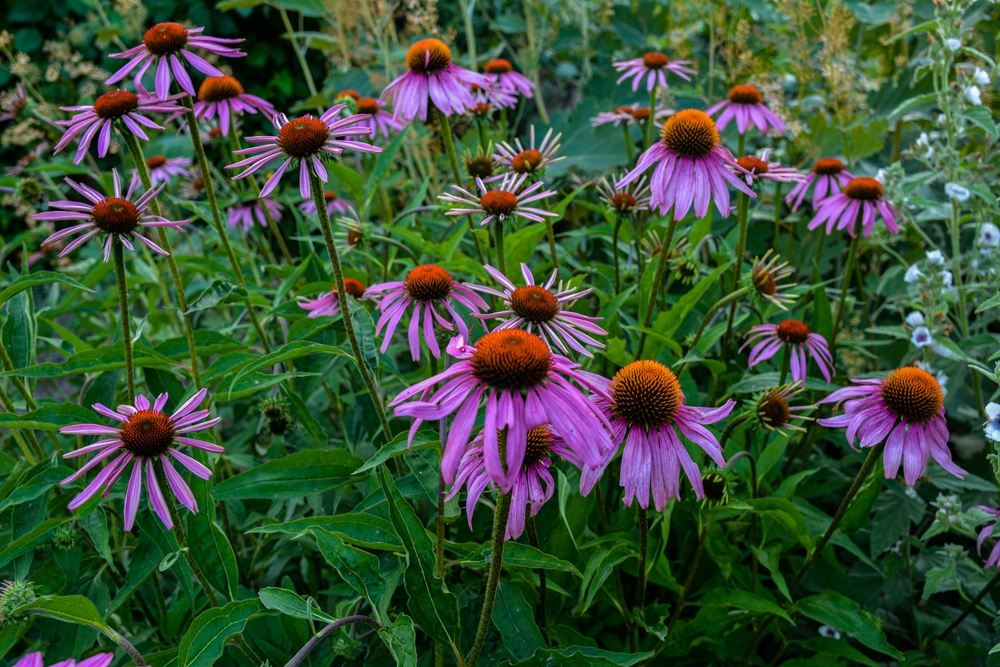
Purple coneflowers are a staple of many fall gardens, providing a much-needed nectar source for bees. These flowers feature large, daisy-like petals in shades of purple, with a prominent central cone that holds the pollen. Their wide bloom period spans from mid-summer to late fall, making them a reliable food source for pollinators. Bees are especially attracted to the rich pollen and nectar that coneflowers produce.
Purple coneflowers thrive in a variety of conditions, including poor soil and drought. They are known for their durability and ability to attract a variety of pollinators, including bees and butterflies. These plants can grow up to 4 feet tall and have a distinctive appearance with their cone-shaped center and drooping petals. With their long blooming season, coneflowers are an excellent choice for late-season gardens.
Joe-Pye Weed (Eutrochium)
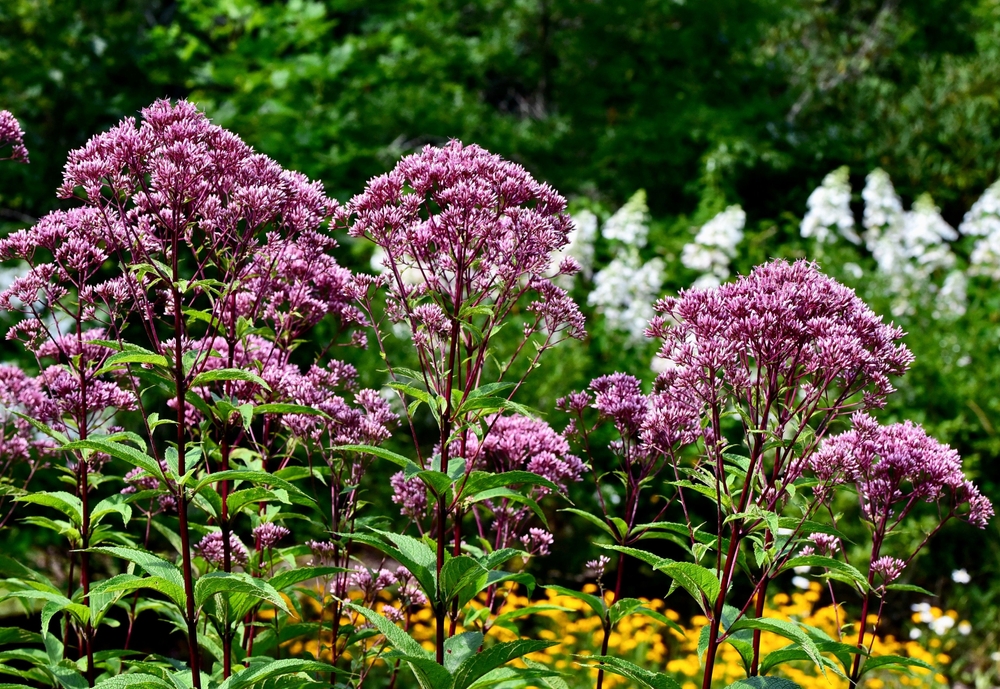
Joe-Pye weed is a tall, perennial plant with clusters of small, pink to purple flowers that are highly attractive to bees. It blooms in late summer through fall, offering a crucial nectar source for pollinators as many other flowers start to fade. Joe-Pye weed thrives in moist, well-drained soil and can grow up to 7 feet tall, making it a striking addition to garden beds or wildflower patches. Its sweet fragrance draws bees in large numbers, making it a great plant for supporting late-season pollinators.
This plant prefers partial to full sun and does best in areas with consistent moisture, such as near ponds or in rain gardens. It is also relatively easy to grow and maintains its attractive blooms throughout the fall. Joe-Pye weed is an excellent addition to gardens focused on supporting pollinators. Bees and other insects rely on it for nourishment as temperatures drop.
Ironweed (Vernonia)
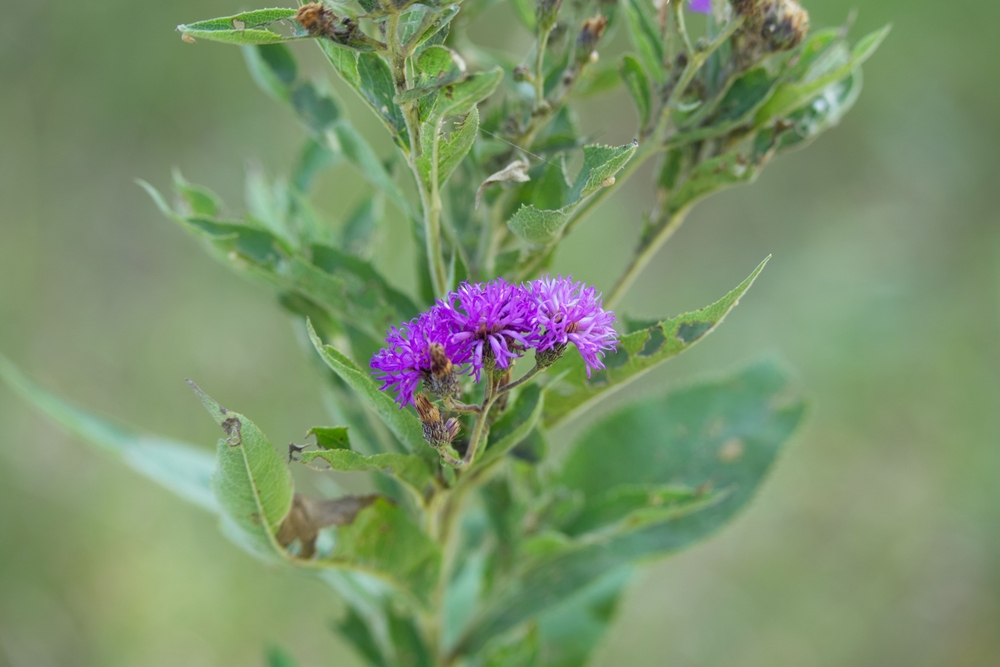
Ironweed is a tall perennial with striking purple flowers that bloom late in the season. The plant produces small, clustered blooms that are perfect for attracting bees, butterflies, and other pollinators. Its late-season flowers provide a crucial source of nectar when many other plants are winding down for the year. Ironweed grows well in moist, well-drained soil and is often found in meadows or along the edges of woodlands.
This plant can reach heights of up to 5 feet and thrives in full sun. Its deep purple flowers are not only beautiful but also highly beneficial for bees as they transition into fall. Ironweed is a great option for filling in the gaps in late-season gardens and providing much-needed food for pollinators. It is an easy-to-grow and hardy plant that contributes to a vibrant and bee-friendly garden.
New England Aster
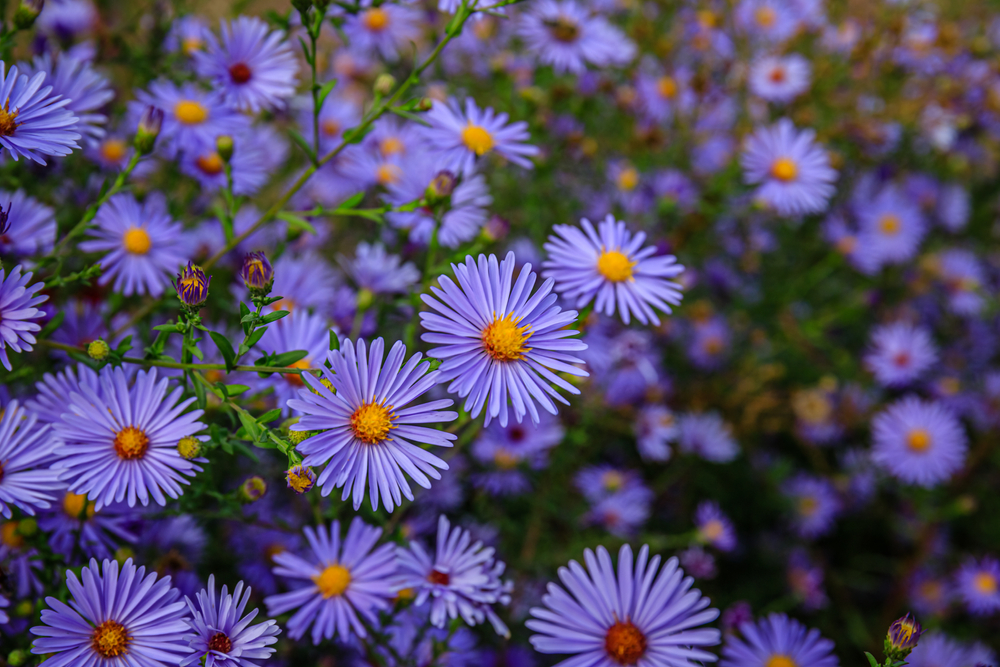
The New England aster is a late-blooming plant that attracts a wide variety of pollinators, including bees. It features vibrant purple, pink, or blue flowers that stand out in the fall garden. These asters bloom from late summer to fall, providing bees with a reliable source of nectar as the cooler weather sets in. They are highly valued for their ability to keep the garden buzzing when many plants are finished blooming.
New England asters are adaptable and thrive in full sun and well-drained soil. They can grow up to 4 feet tall, making them a striking addition to garden beds or wildflower meadows. These plants are not only beneficial to bees but also provide an attractive display of color as the seasons change. Their late-season blooms are essential for keeping pollinators well-fed through the fall months.
Helenium (Sneezeweed)
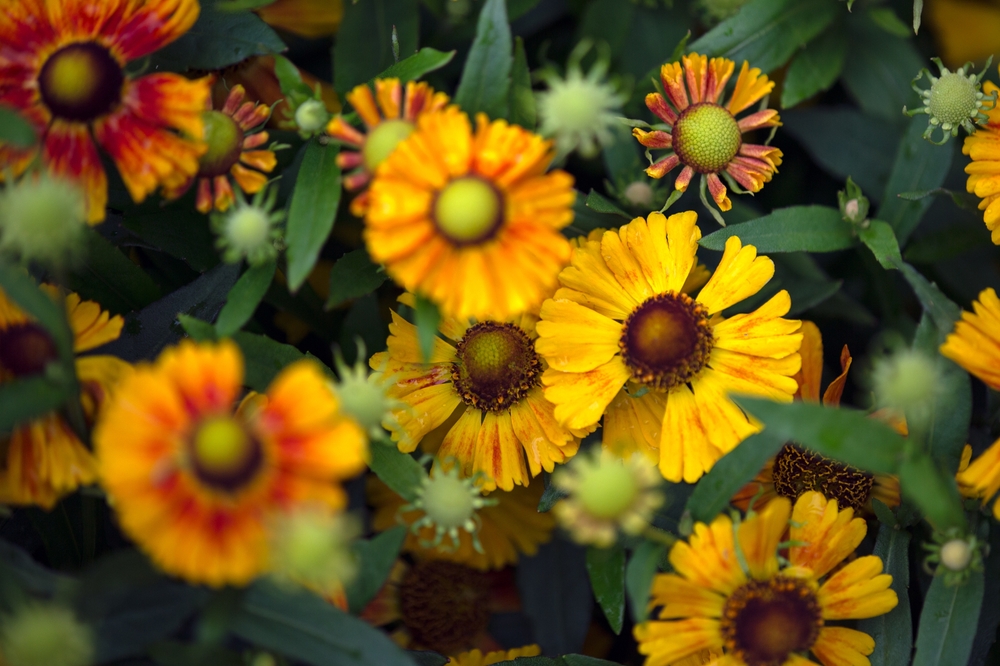
Helenium, commonly known as sneezeweed, produces vibrant yellow, orange, and red flowers that are perfect for late-season gardens. Its daisy-like flowers bloom late in the summer and continue into the fall, attracting bees and other pollinators. Helenium’s nectar-rich flowers provide a much-needed food source as the temperatures begin to cool. Its bright colors are a cheerful addition to any fall garden, and it thrives in full sun.
This plant does well in moist, well-drained soil and can grow up to 5 feet tall. It is a great choice for adding color to the late season, while also supporting the local bee population. Helenium is an easy-to-grow plant that requires minimal care once established. Its long blooming period makes it a valuable asset for any pollinator-friendly garden.
Chrysanthemums (Mums)
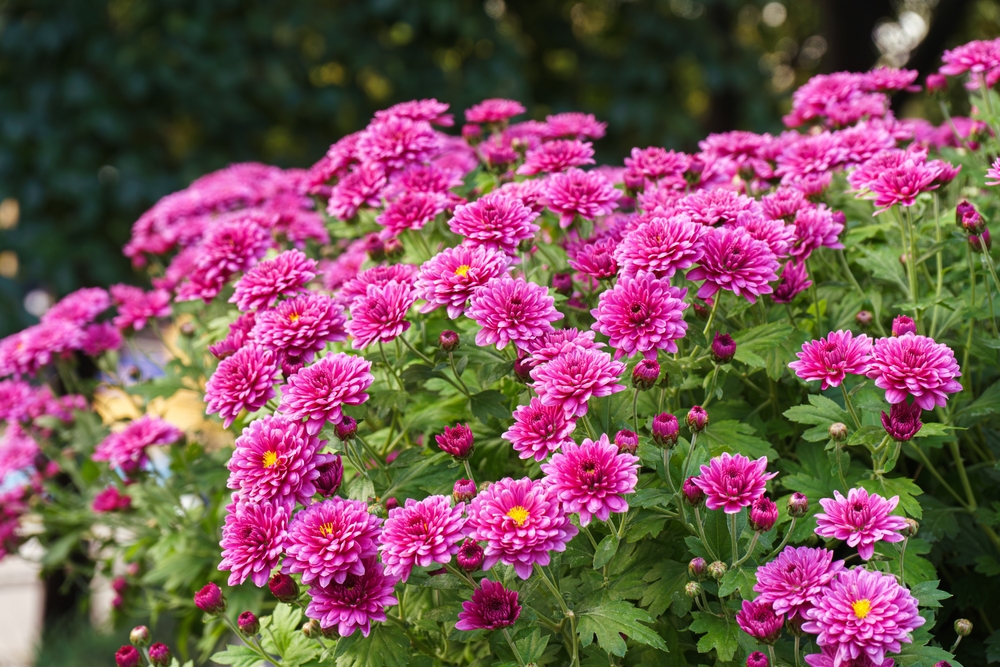
Chrysanthemums, commonly known as mums, are a classic fall plant that attracts bees with their rich nectar. These flowers come in a variety of colors, from vibrant reds and yellows to soft pinks and whites. Mums bloom in late summer through fall, providing a valuable food source for bees as the weather cools. Their showy, full flowers are not only beautiful but also essential for keeping the bees active late in the growing season.
Mums are relatively easy to grow, thriving in full sun and well-drained soil. They come in a variety of sizes, from compact varieties to larger, bushy plants. Mums are often used as decorative plants in fall displays but are also highly beneficial to pollinators. Their late-season blooms make them a popular choice for gardens focused on supporting wildlife.
Sunflower (Autumn Beauty)

The Autumn Beauty sunflower is a late-blooming variety that continues to attract bees well into the fall. These sunflowers are known for their bright, multi-colored blooms, ranging from yellow to orange and red. They are perfect for providing bees with nectar in the later months when other flowers have stopped blooming. The large, open flowers make it easy for bees to access the pollen and nectar they need.
Sunflowers are easy to grow, requiring full sun and well-drained soil. These plants can grow up to 6 feet tall, making them a stunning addition to any garden. Their long blooming period ensures that bees have a food source until the frost arrives. With their cheerful blooms and bee-friendly nature, these sunflowers are a great choice for fall gardens.
Balloon Flower (Platycodon)
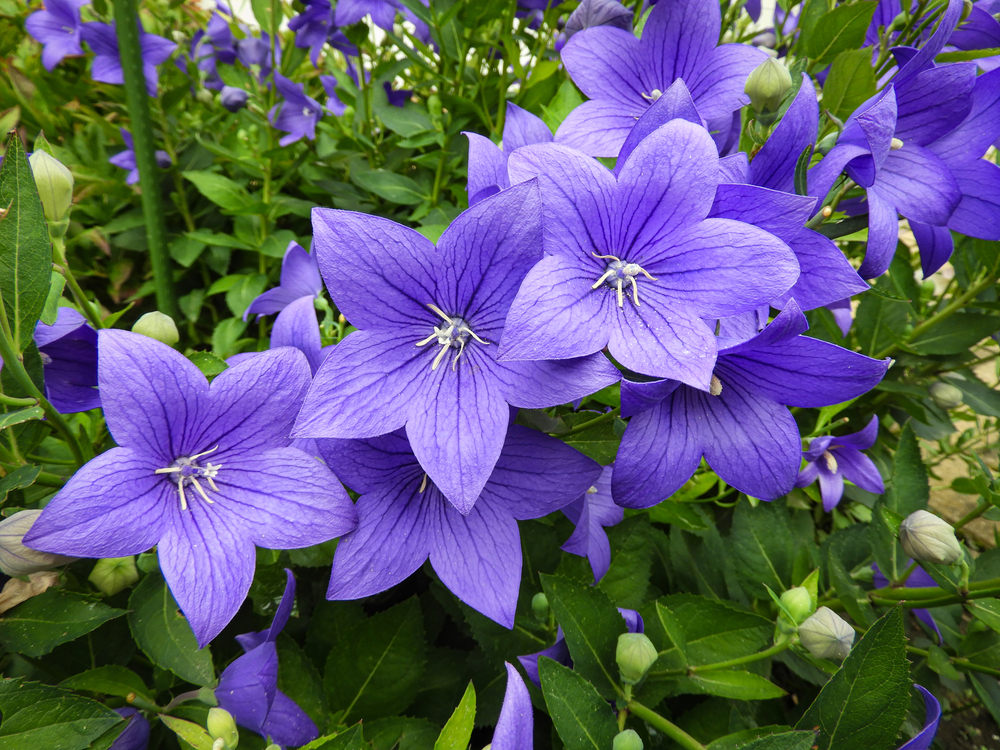
Balloon flowers are an attractive late-blooming plant that provides both beauty and food for bees. Their unique, balloon-shaped buds open into star-like flowers, which come in shades of blue, purple, and white. These flowers bloom from late summer to fall, offering bees a continued food source as the season winds down. Balloon flowers are also long-lasting, keeping their blooms for several weeks.
This perennial thrives in full sun and well-drained soil, making it an easy-to-care-for addition to any garden. Balloon flowers grow to about 18 inches tall and are perfect for filling in smaller spaces. Their late-season blooms are a reliable source of nectar for bees. These plants are a charming addition to any bee-friendly garden.
Salvia
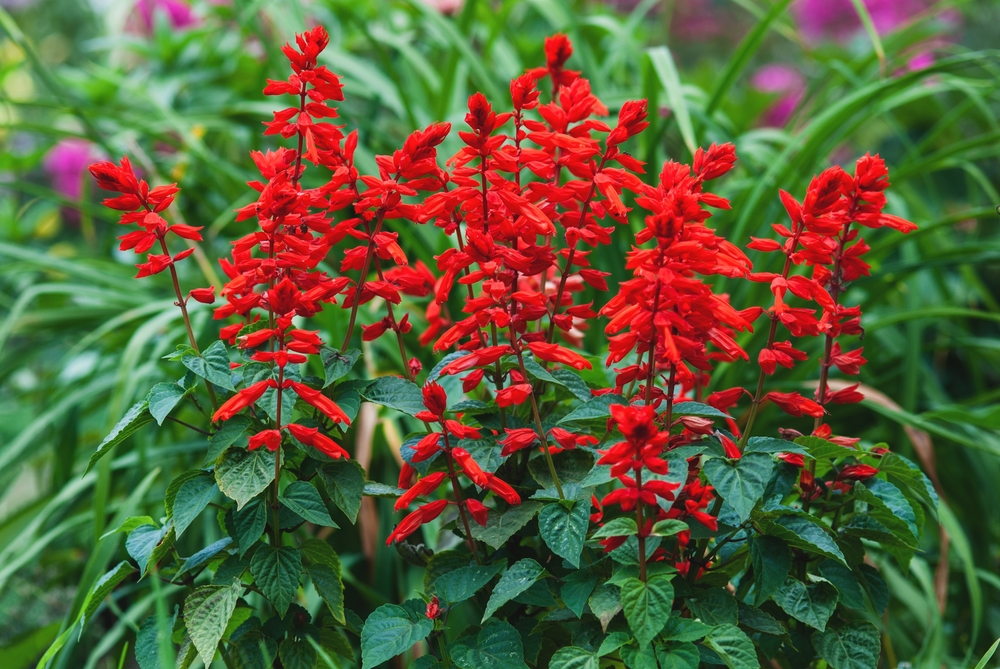
Salvia is a hardy plant that blooms late in the season, offering a rich nectar source for bees. Its spikes of blue, purple, or red flowers attract pollinators throughout the fall months. Salvias are known for their ability to thrive in a variety of conditions, from full sun to partial shade. Their long, tubular flowers make it easy for bees to gather nectar and pollen.
Salvias are drought-tolerant and low-maintenance, making them a great option for busy gardeners. These plants can grow up to 3 feet tall, adding vertical interest to the garden. Their late blooming season ensures that they remain a vital food source for bees even as other flowers fade. Salvia is a perfect addition to any garden focused on supporting pollinators.
Toad Lily (Tricyrtis)
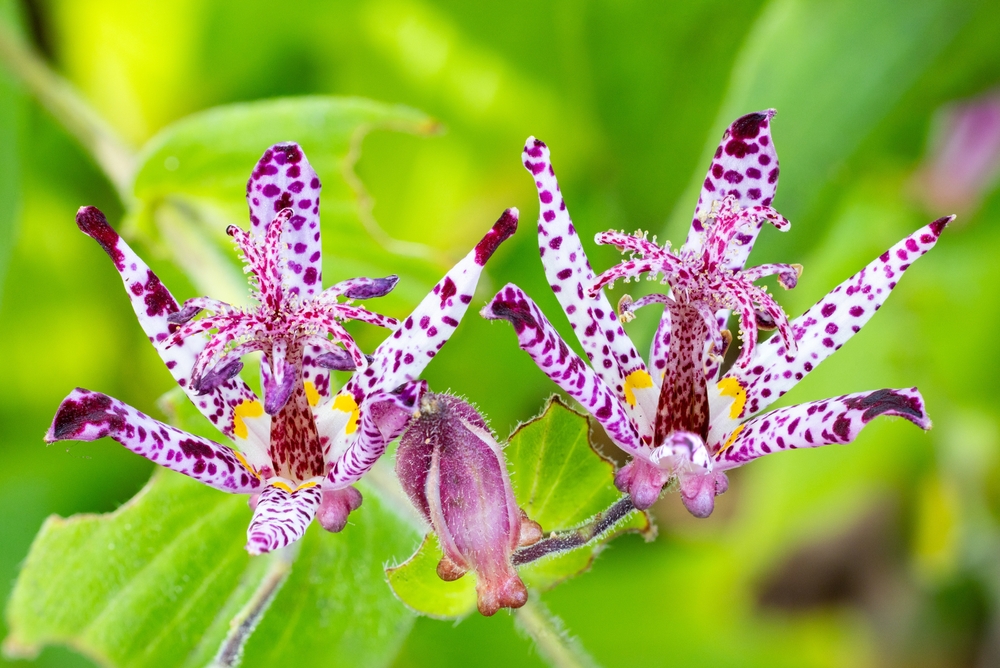
Toad lilies are unique late-blooming plants that offer a striking appearance and nectar-rich flowers for bees. They produce small, orchid-like blooms in shades of purple, white, and pink. These plants bloom in late summer through fall, providing a late-season food source for pollinators. The flowers’ intricate patterns are not only beautiful but also attractive to bees looking for nectar.
Toad lilies grow well in partial to full shade, making them an ideal choice for woodland gardens or shaded areas. They typically grow to about 2 feet tall and have a delicate, elegant appearance. Their late-season flowers are a vital resource for bees, and their unusual beauty adds charm to any garden. Toad lilies are easy to grow and thrive in moist, well-drained soil.
Lavender (Autumn Varieties)
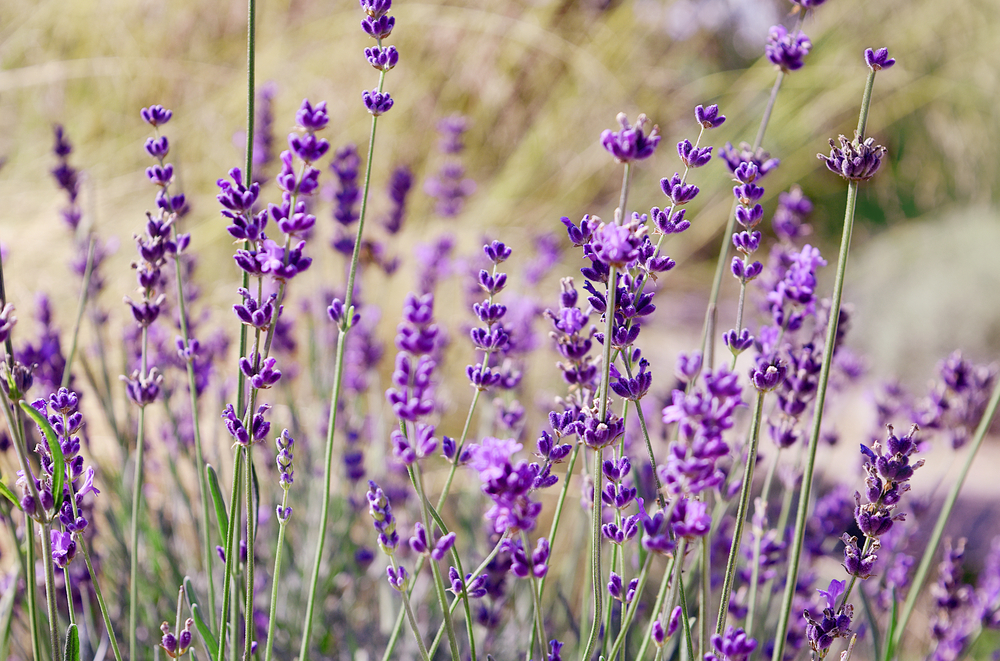
Autumn-blooming lavenders are perfect for keeping bees busy late in the season. These varieties produce fragrant purple flowers that bees adore. Lavender blooms from late summer into fall, providing a reliable nectar source as the temperatures cool. The aromatic flowers are a welcome addition to gardens, offering not just beauty but also a long-lasting food source for bees.
Lavender thrives in full sun and well-drained soil, making it a hardy plant to grow. These plants grow to about 2 feet tall and have a strong fragrance that makes them a favorite among bees and gardeners alike. Their long blooming period ensures that they will continue to provide nectar as other plants finish their bloom. Lavender is also drought-tolerant and easy to care for, making it a great option for late-season gardens.
This article originally appeared on Avocadu.
